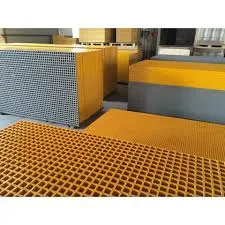
-
 Afrikaans
Afrikaans -
 Albanian
Albanian -
 Amharic
Amharic -
 Arabic
Arabic -
 Armenian
Armenian -
 Azerbaijani
Azerbaijani -
 Basque
Basque -
 Belarusian
Belarusian -
 Bengali
Bengali -
 Bosnian
Bosnian -
 Bulgarian
Bulgarian -
 Catalan
Catalan -
 Cebuano
Cebuano -
 China
China -
 China (Taiwan)
China (Taiwan) -
 Corsican
Corsican -
 Croatian
Croatian -
 Czech
Czech -
 Danish
Danish -
 Dutch
Dutch -
 English
English -
 Esperanto
Esperanto -
 Estonian
Estonian -
 Finnish
Finnish -
 French
French -
 Frisian
Frisian -
 Galician
Galician -
 Georgian
Georgian -
 German
German -
 Greek
Greek -
 Gujarati
Gujarati -
 Haitian Creole
Haitian Creole -
 hausa
hausa -
 hawaiian
hawaiian -
 Hebrew
Hebrew -
 Hindi
Hindi -
 Miao
Miao -
 Hungarian
Hungarian -
 Icelandic
Icelandic -
 igbo
igbo -
 Indonesian
Indonesian -
 irish
irish -
 Italian
Italian -
 Japanese
Japanese -
 Javanese
Javanese -
 Kannada
Kannada -
 kazakh
kazakh -
 Khmer
Khmer -
 Rwandese
Rwandese -
 Korean
Korean -
 Kurdish
Kurdish -
 Kyrgyz
Kyrgyz -
 Lao
Lao -
 Latin
Latin -
 Latvian
Latvian -
 Lithuanian
Lithuanian -
 Luxembourgish
Luxembourgish -
 Macedonian
Macedonian -
 Malgashi
Malgashi -
 Malay
Malay -
 Malayalam
Malayalam -
 Maltese
Maltese -
 Maori
Maori -
 Marathi
Marathi -
 Mongolian
Mongolian -
 Myanmar
Myanmar -
 Nepali
Nepali -
 Norwegian
Norwegian -
 Norwegian
Norwegian -
 Occitan
Occitan -
 Pashto
Pashto -
 Persian
Persian -
 Polish
Polish -
 Portuguese
Portuguese -
 Punjabi
Punjabi -
 Romanian
Romanian -
 Russian
Russian -
 Samoan
Samoan -
 Scottish Gaelic
Scottish Gaelic -
 Serbian
Serbian -
 Sesotho
Sesotho -
 Shona
Shona -
 Sindhi
Sindhi -
 Sinhala
Sinhala -
 Slovak
Slovak -
 Slovenian
Slovenian -
 Somali
Somali -
 Spanish
Spanish -
 Sundanese
Sundanese -
 Swahili
Swahili -
 Swedish
Swedish -
 Tagalog
Tagalog -
 Tajik
Tajik -
 Tamil
Tamil -
 Tatar
Tatar -
 Telugu
Telugu -
 Thai
Thai -
 Turkish
Turkish -
 Turkmen
Turkmen -
 Ukrainian
Ukrainian -
 Urdu
Urdu -
 Uighur
Uighur -
 Uzbek
Uzbek -
 Vietnamese
Vietnamese -
 Welsh
Welsh -
 Bantu
Bantu -
 Yiddish
Yiddish -
 Yoruba
Yoruba -
 Zulu
Zulu
Proper Extension of a Threaded Rod
Extending a Threaded Rod Proper Techniques and Tips
Threaded rods are commonly used in various construction and engineering applications, providing a robust mechanism for fastening components together. However, there comes a time when the length of a threaded rod needs to be extended for practical purposes. Understanding how to properly extend a threaded rod is essential to ensure the integrity and safety of the structure. In this article, we will discuss the techniques and considerations for extending a threaded rod effectively.
Understanding Threaded Rods
Threaded rods are long, cylindrical rods with helical grooves, making them suitable for fastening and joining components. They come in various materials, such as steel and stainless steel, and can be used in different environments, from construction to automotive applications. When you need to extend a threaded rod, the aim is to maintain the axial load and avoid compromising the thread integrity.
Techniques for Extension
1. Threaded Couplers One of the simplest and most effective ways to extend a threaded rod is by using a threaded coupler. This metal connector has internal threads on both ends, allowing you to screw both ends of the rods into it. Ensure that the coupler is made from the same material and is rated for similar loads as the rods to maintain structural integrity.
2. Welding If the application allows for it, and both pieces of the rod are made from a weldable material, welding can be an option. However, this method requires proper technique to prevent warping or compromising the strength of the materials. It’s also important to consider that welding could affect the corrosion resistance of some metals.
3. Inserting a Sleeve Another method involves using a sleeve that fits over the ends of the rods. This gives additional length and helps distribute the load effectively. The sleeve can be bolted or welded into place for added security.
extension of a threaded rod how to properly extend a

Considerations
- Load Ratings When extending a threaded rod, it is critical to consider the load ratings of both the rod and the extension method. Ensure that any coupling device or sleeve can handle the same load as the original rod.
- Alignment Proper alignment of the rods during extension is crucial. Misalignment can lead to uneven loading and potential failure of the assembly.
- Corrosion Resistance If the rods will be exposed to harsh environments, ensure that your extension methods are compatible in terms of corrosion resistance. For example, avoid mixing metals that can create galvanic corrosion.
- Thread Integrity Check the integrity of the threads before attempting to extend a rod. Worn threads can lead to instability and a higher risk of failure.
Conclusion
Extending a threaded rod can be a straightforward process if done with the right techniques and considerations. Whether using couplers, welding, or sleeves, always prioritize safety and structural integrity. By following these guidelines, you’ll be better equipped to handle extensions in a way that maintains the strength and reliability of the installation.
Latest news
-
Rectangular Tank with Dimensions for GRP Calculation Custom Fiberglass GRP Rectangular TanksNewsJul.07,2025
-
High-Quality Fiberglass Weir Custom FRP Weir & Fiberglass Tanks ManufacturerNewsJul.07,2025
-
CPVC FRP Pipe A Reliable Choice for Industrial Applications High Strength & Corrosion ResistanceNewsJul.07,2025
-
Fiberglass Scrubber for Effective Cleaning and Stain Removal – Superior Performance in Various ApplicationsNewsJul.06,2025
-
YT27 Rock Drill Sure, Here's a Similar Short Phrase Drilling Rock is Tough but Our Tool ExcelsNewsJul.06,2025
-
Stone Drill Bit for Hard Rock Wholesale – High Performance Toothed Button Bit OptionsNewsJul.06,2025









